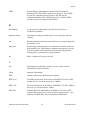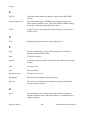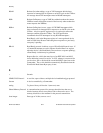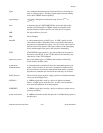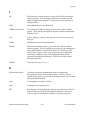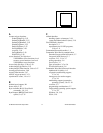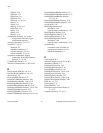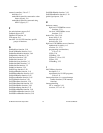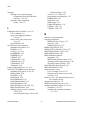
Glossary
© National Instruments Corporation G-13 NI-VXI User Manual
signal Any communication between message-based devices consisting of a
write to a Signal register. Sending a signal requires that the sending
device have VMEbus master capability.
signed integer n bit pattern, interpreted such that the range is from -2
(n-1)
to
+2
(n-1)
-1.
slave A functional part of a MXI/VME/VXIbus device that detects data
transfer cycles initiated by a VMEbus master and responds to the
transfers when the address specifies one of the device’s registers.
SMP See Shared Memory Protocol.
SRQ Service Request
status/ID A value returned during an IACK cycle. In VME, usually an 8-bit
value which is either a status/data value or a vector/ID value used by
the processor to determine the source. In VXI, a 16-bit value used as a
data; the lower 8 bits form the VXI logical address of the interrupting
device and the upper 8 bits specify the reason for interrupting.
STST START/STOP trigger protocol; a one-line, multiple-device protocol
that can be sourced only by the VXI Slot 0 device and sensed by any
other device on the VXI backplane.
supervisory access One of the defined types of VMEbus data transfers; indicated by
certain address modifier codes.
synchronous A communications system that follows the command/response cycle
communications model. In this model, a device issues a command to another device;
the second device executes the command and then returns a response.
Synchronous commands are executed in the order they are received.
SYNC Protocol The most basic trigger protocol, simply a pulse of a minimum duration
on any one of the trigger lines.
SYSFAIL* A VMEbus signal that is used by a device to indicate an internal
failure. A failed device asserts this line. In VXI, a device that fails
also clears its PASSed bit in its Status register.
SYSRESET* A VMEbus signal that is used by a device to indicate a system reset or
power-up condition.
system clock driver A VMEbus functional module that provides a 16 MHz timing signal on
the utility bus.





